Janus Lab Italy
The Peacock Necklace
The Peacock Necklace
The idea is to represent an ancient relic through a modern interpretation, using enamel to emphasize texture and depth. The copper slices, instead of being cut, have been broken to convey a sense of roughness—irregular edges and uneven borders. The texture is created through repetitive folding and realignment, giving the pieces the appearance of aged metal.
The asymmetric composition is meant to evoke and highlight imperfection, while the color palette brings harmony, uniting the elements into a cohesive whole.
A thin square bar of copper, running along both the top and bottom, encircles the wearer’s neck with a hammered texture, enriched at the meeting point by a small half-sphere at its base.
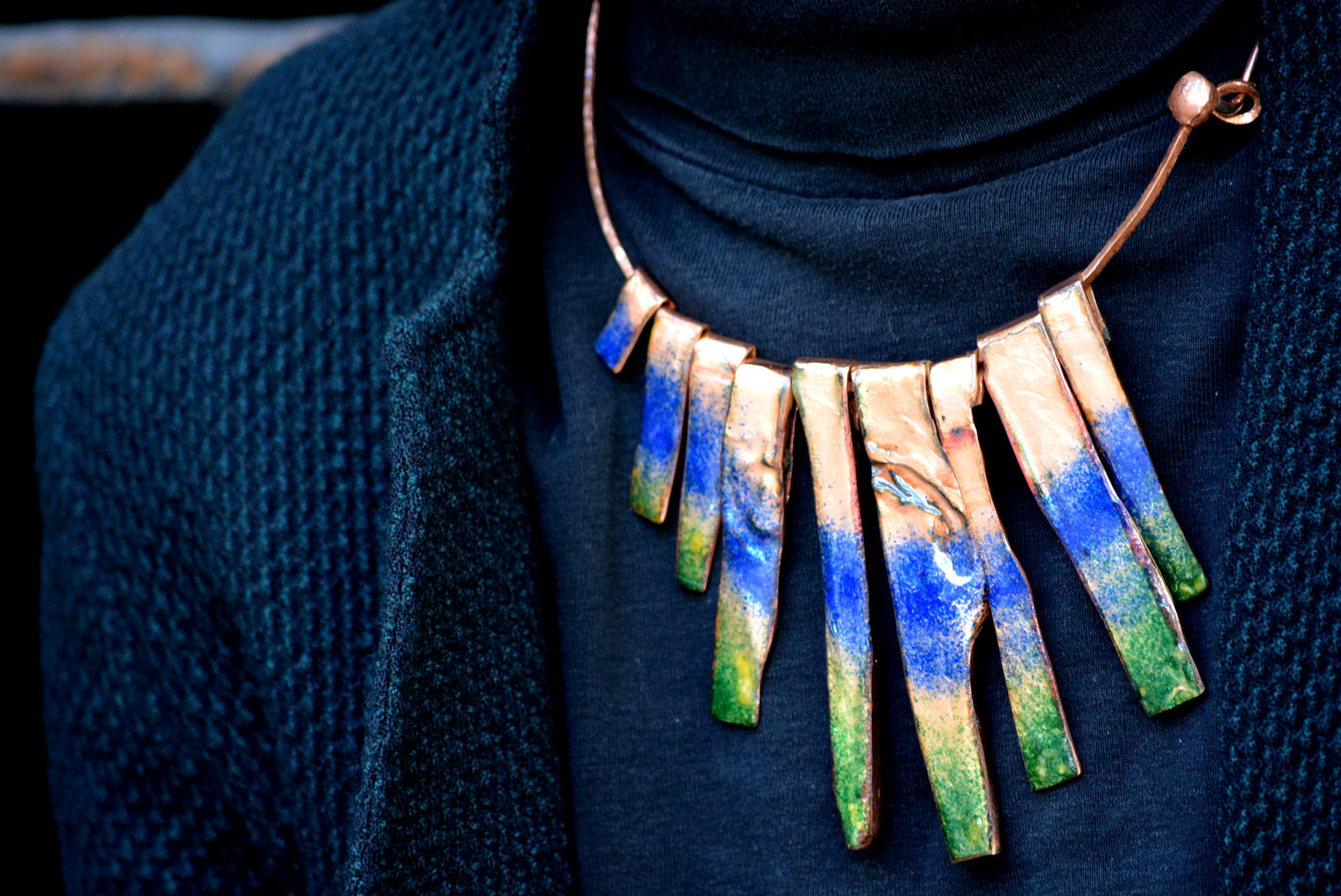
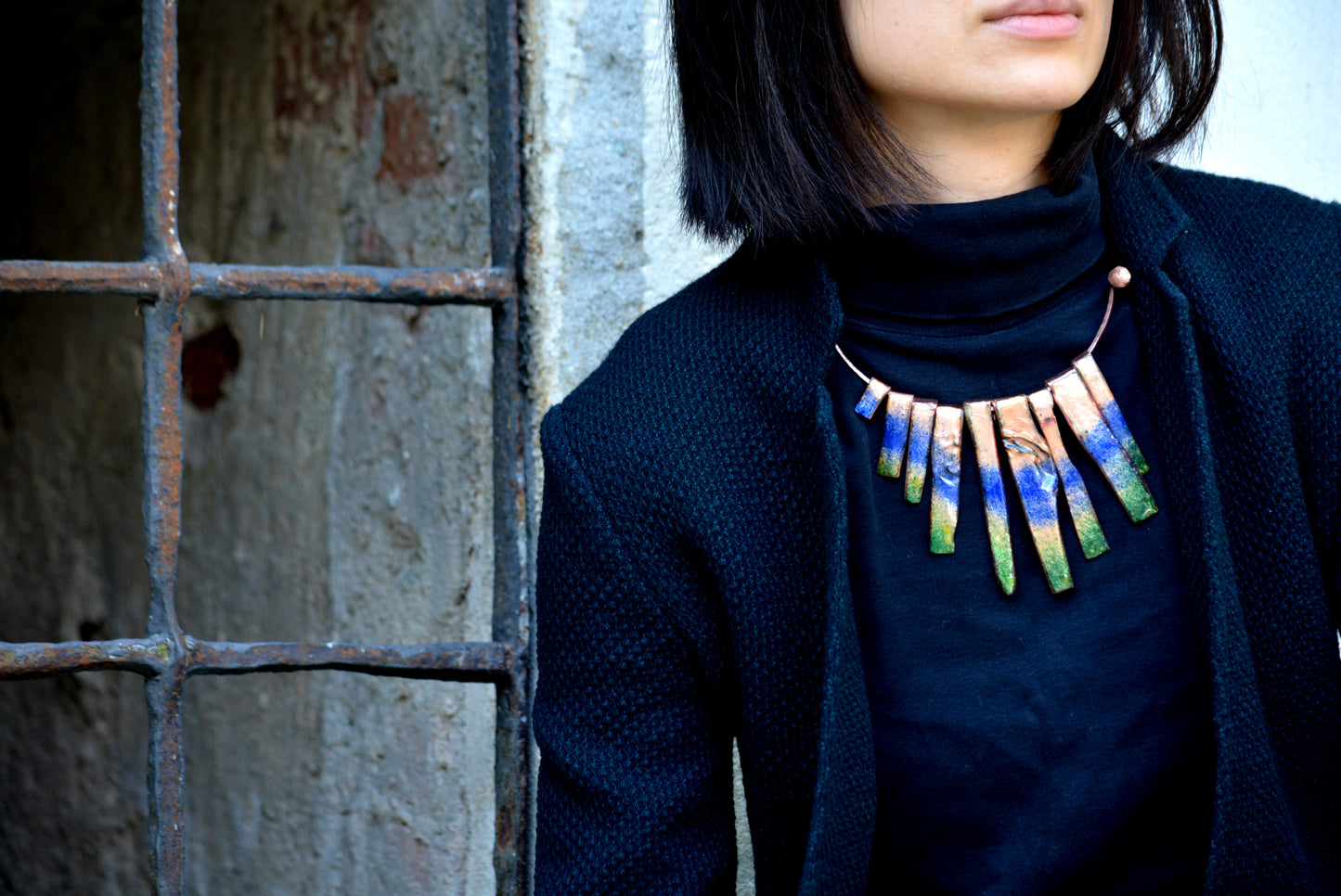
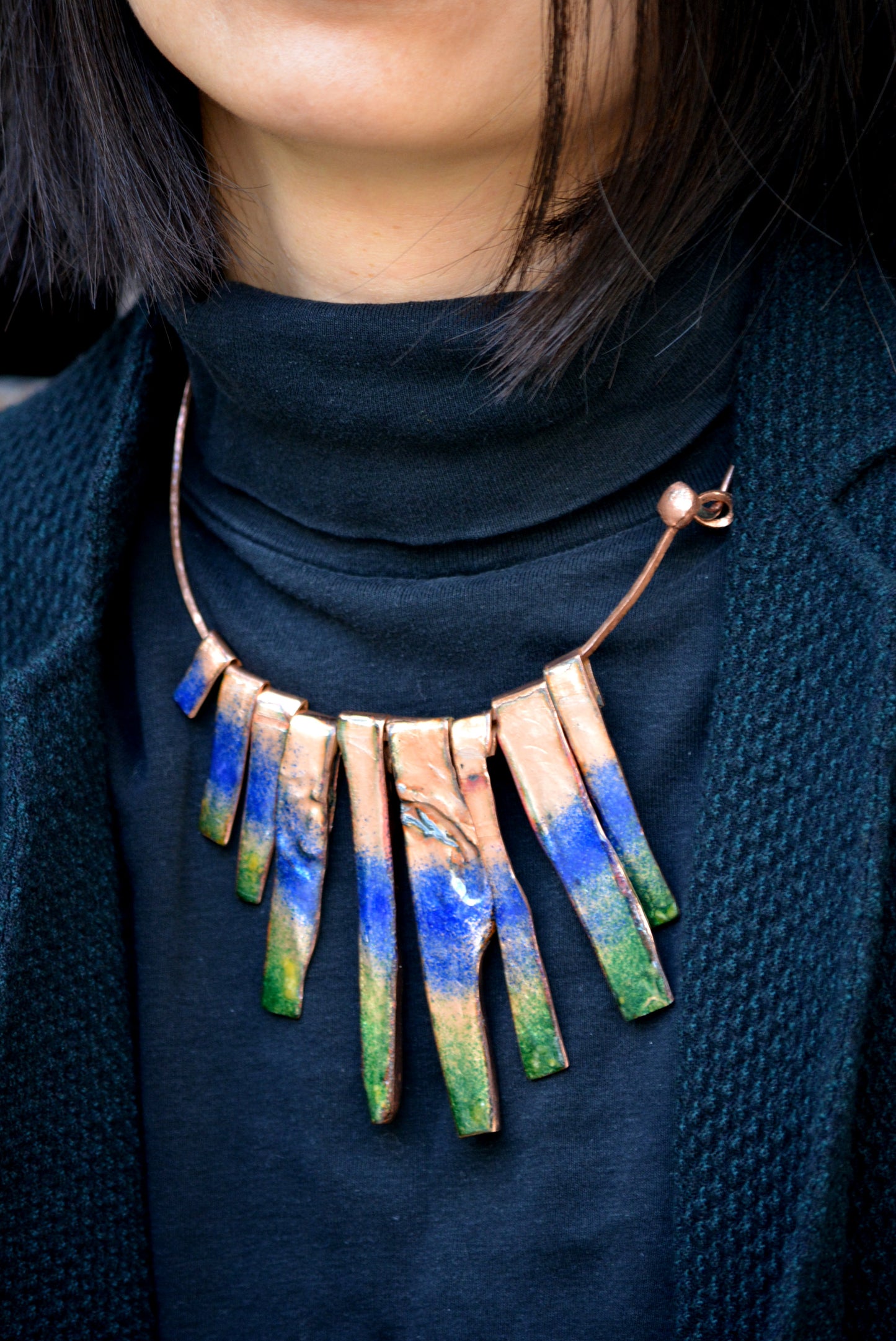
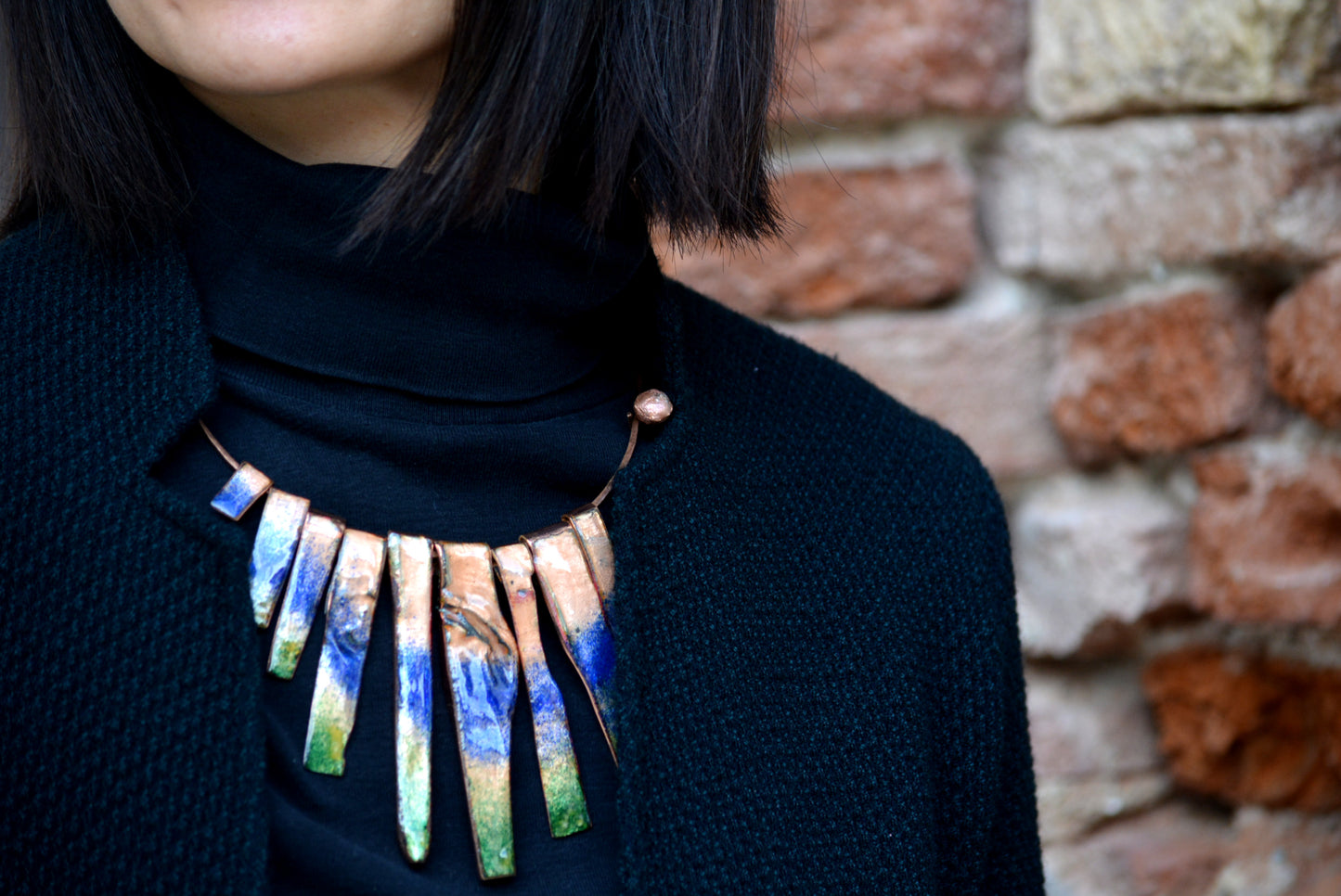
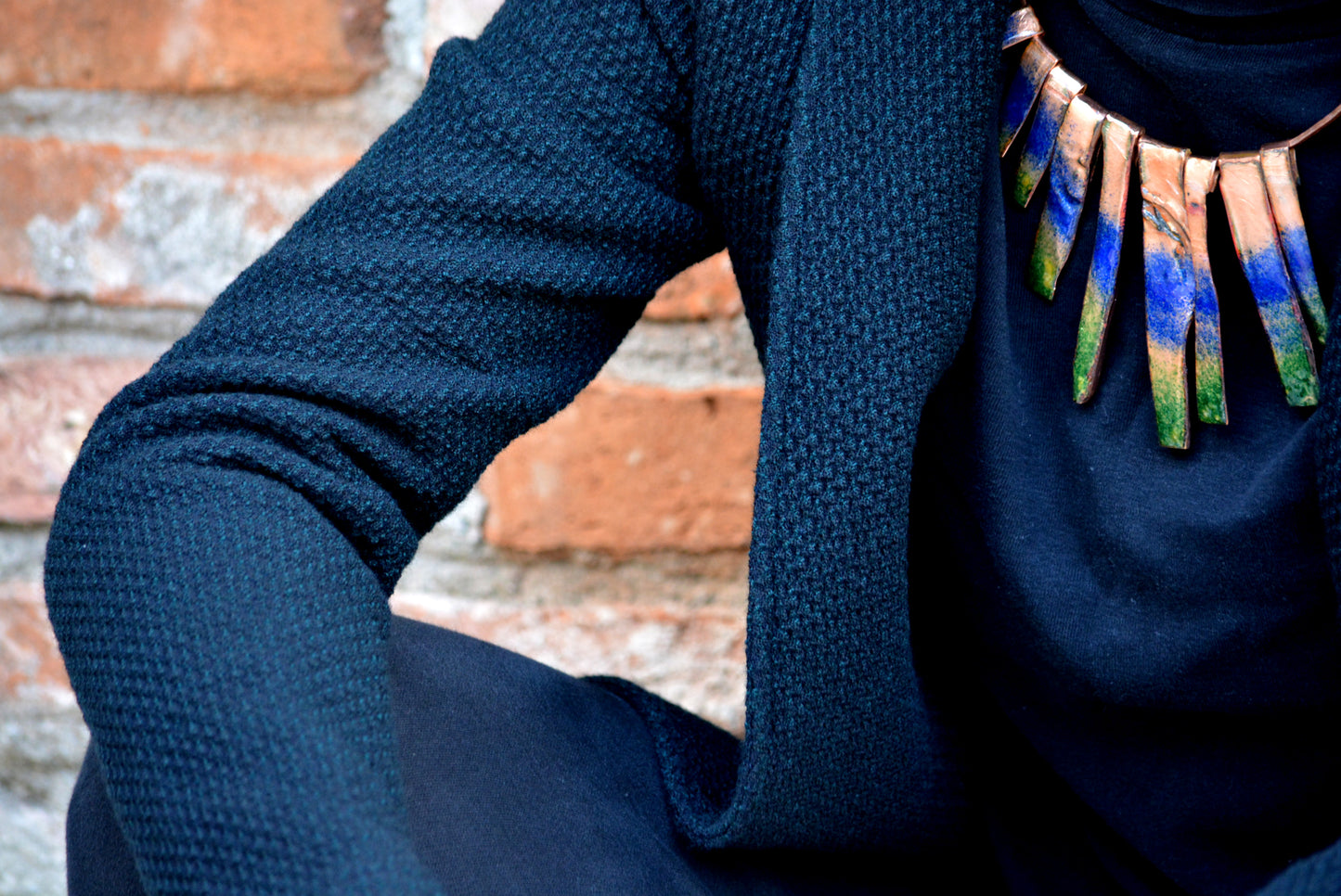
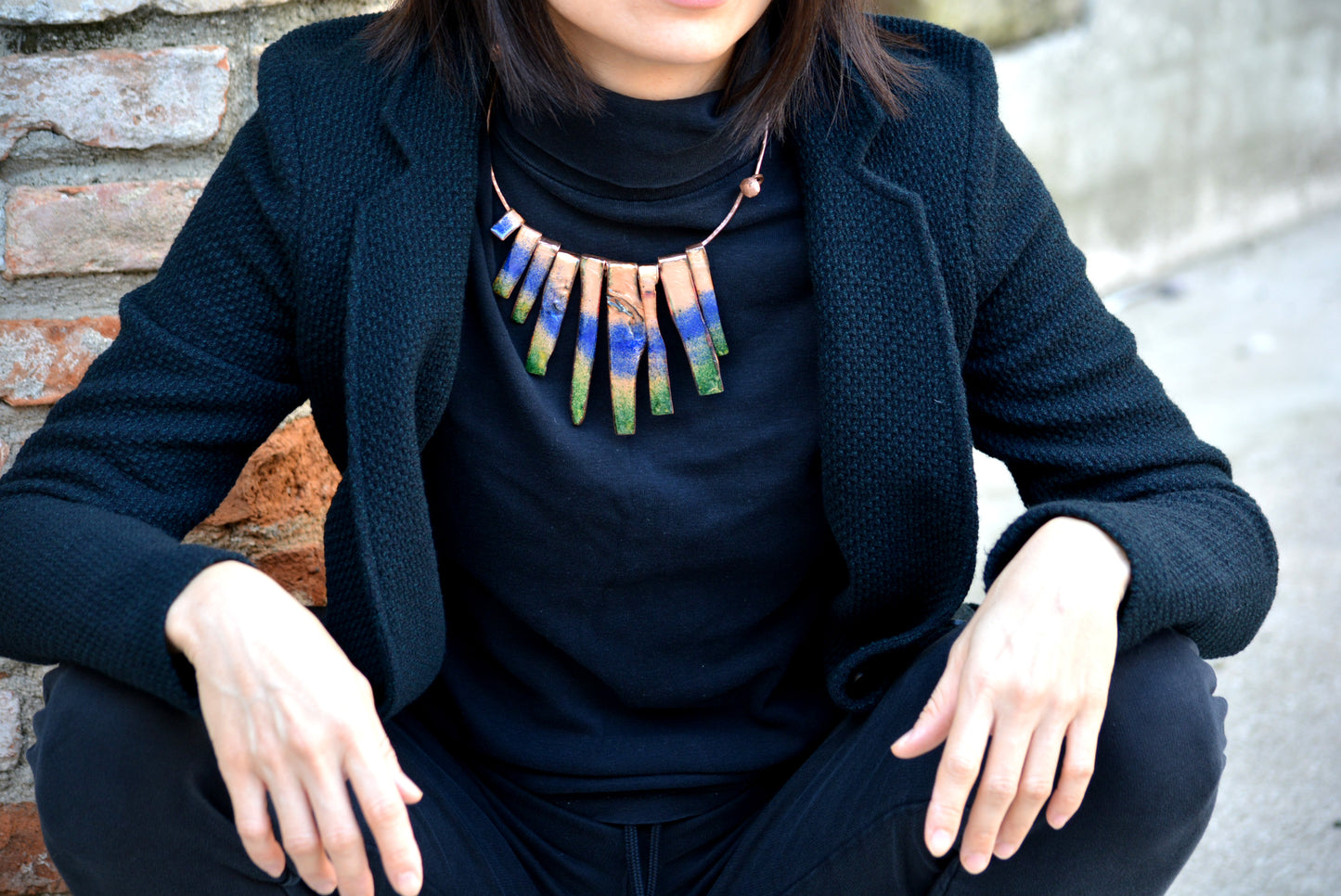
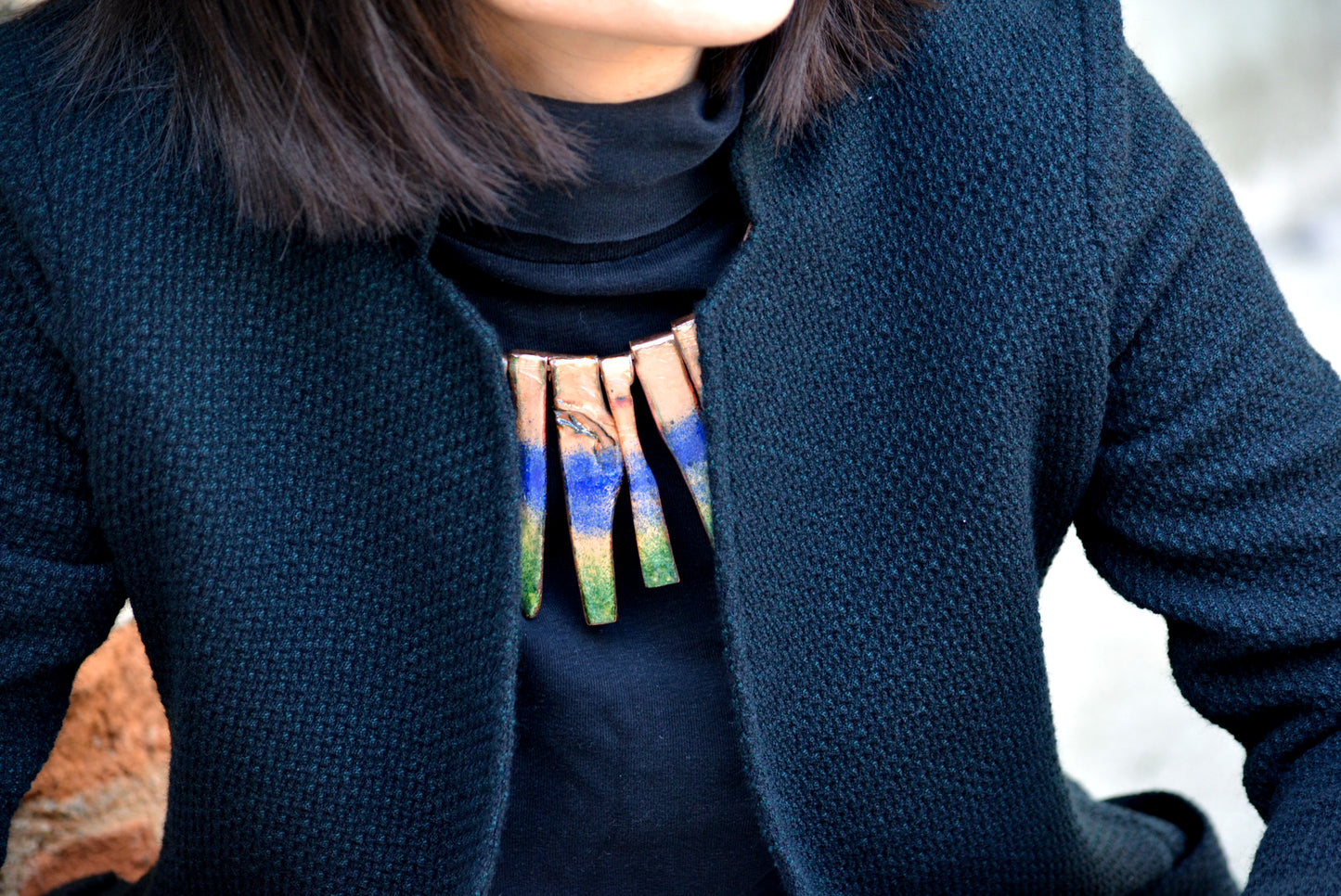
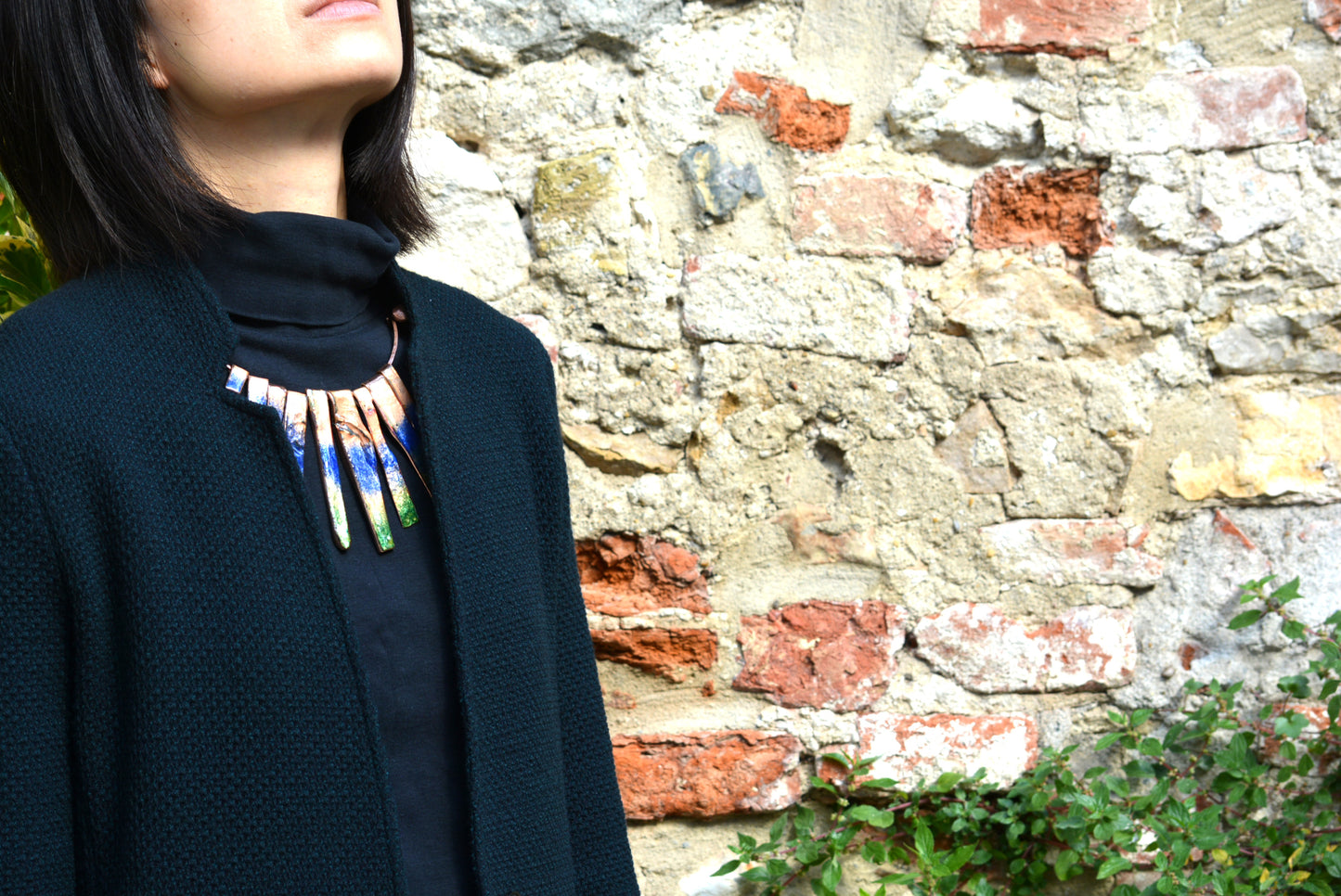
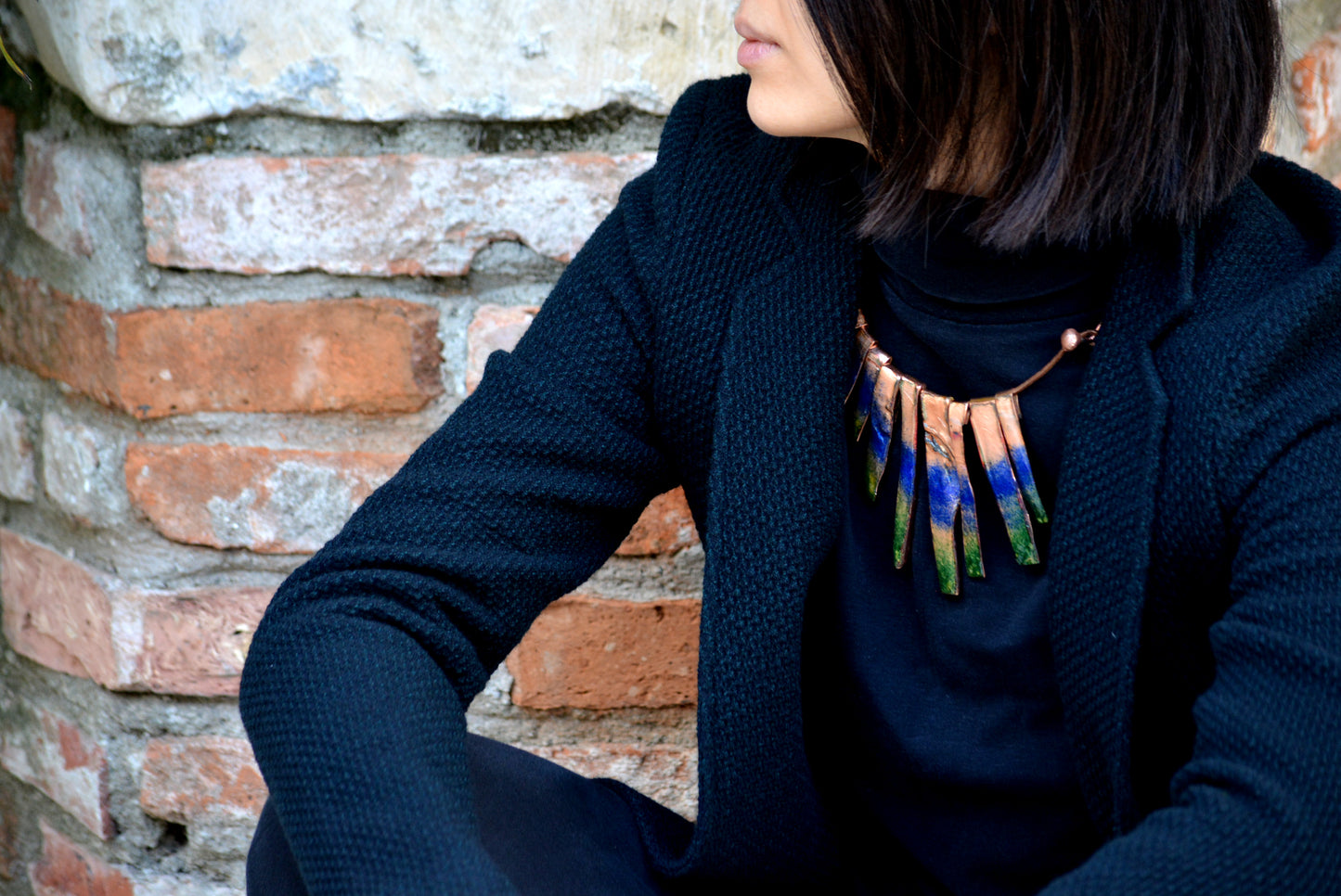
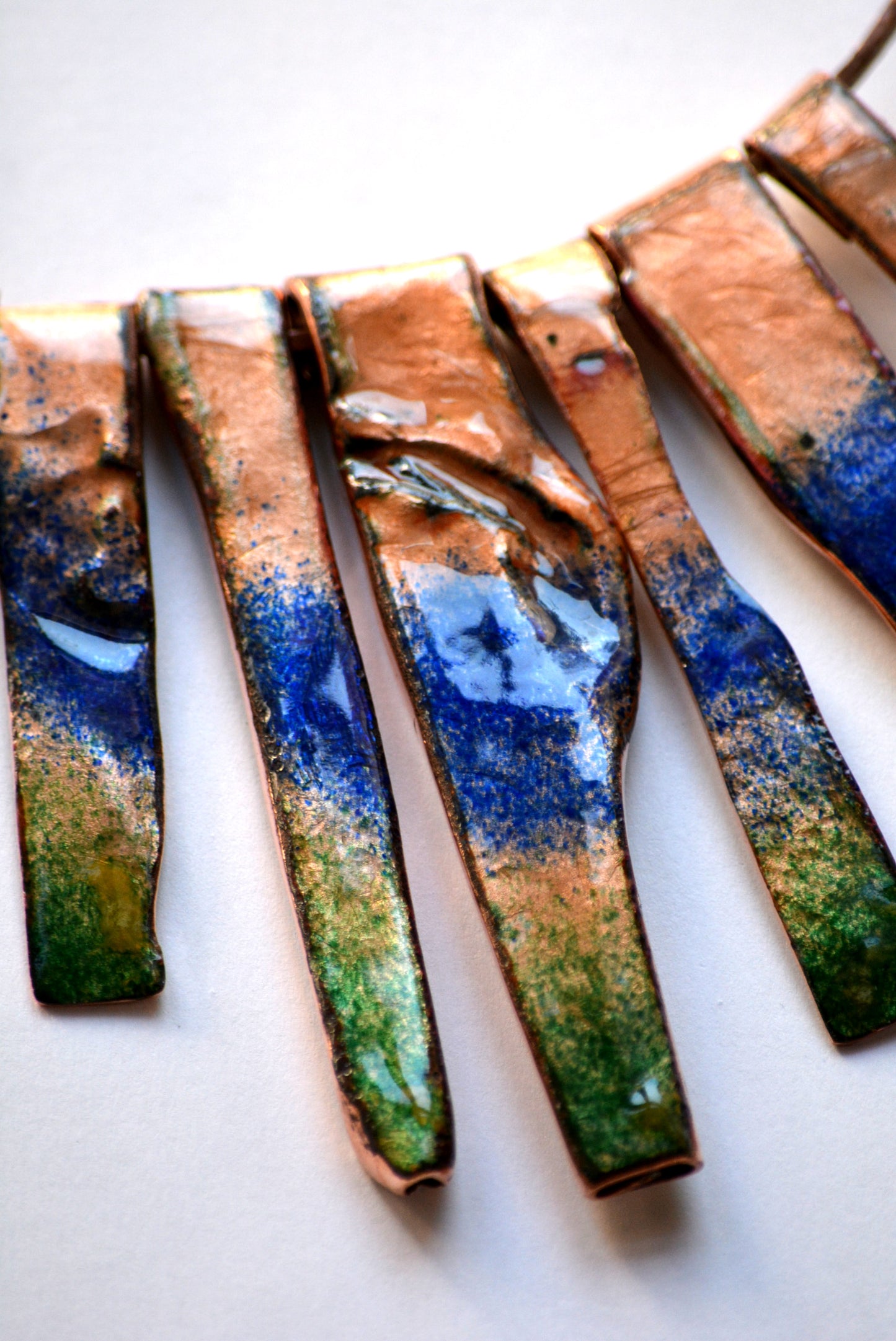
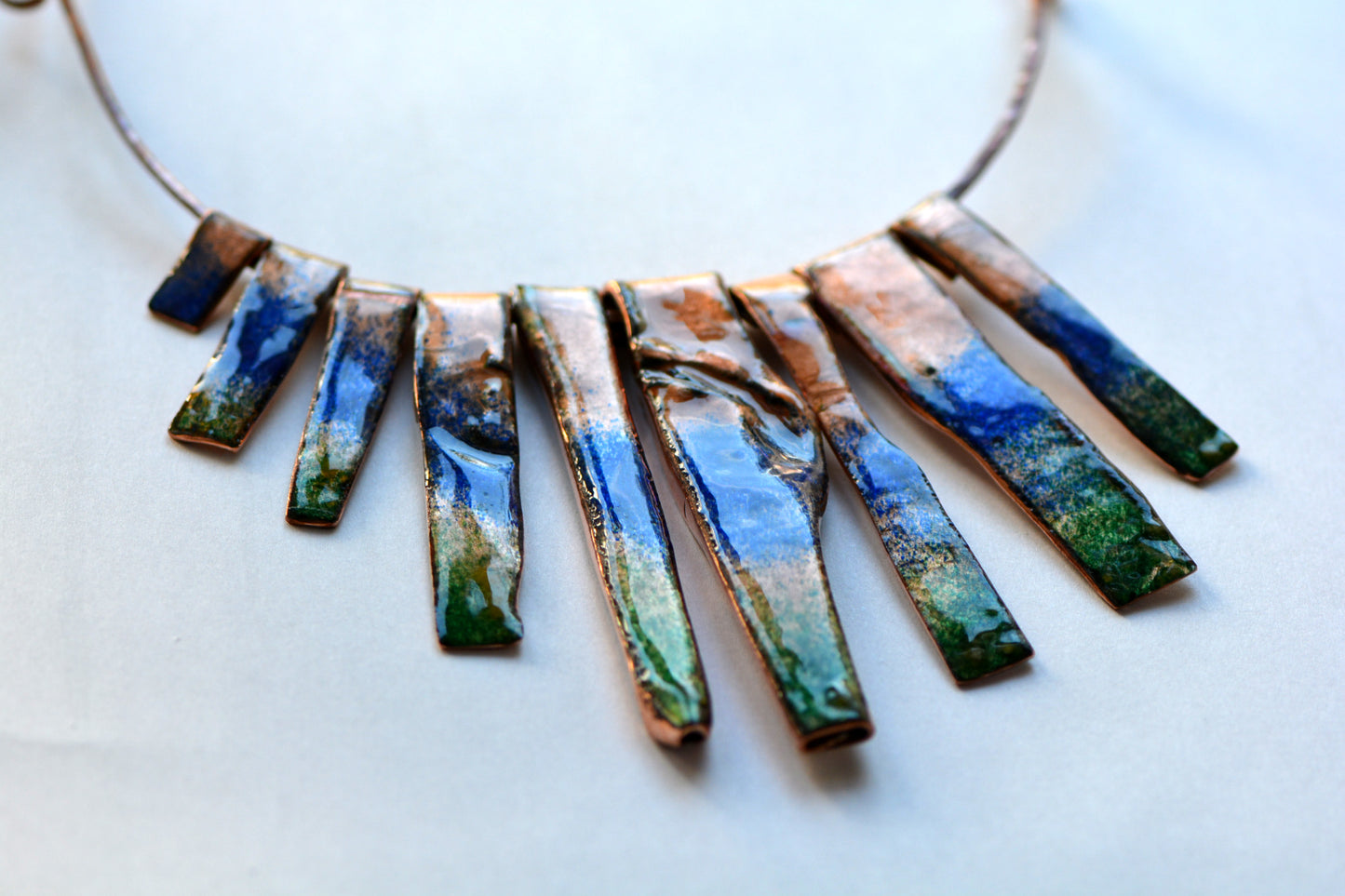
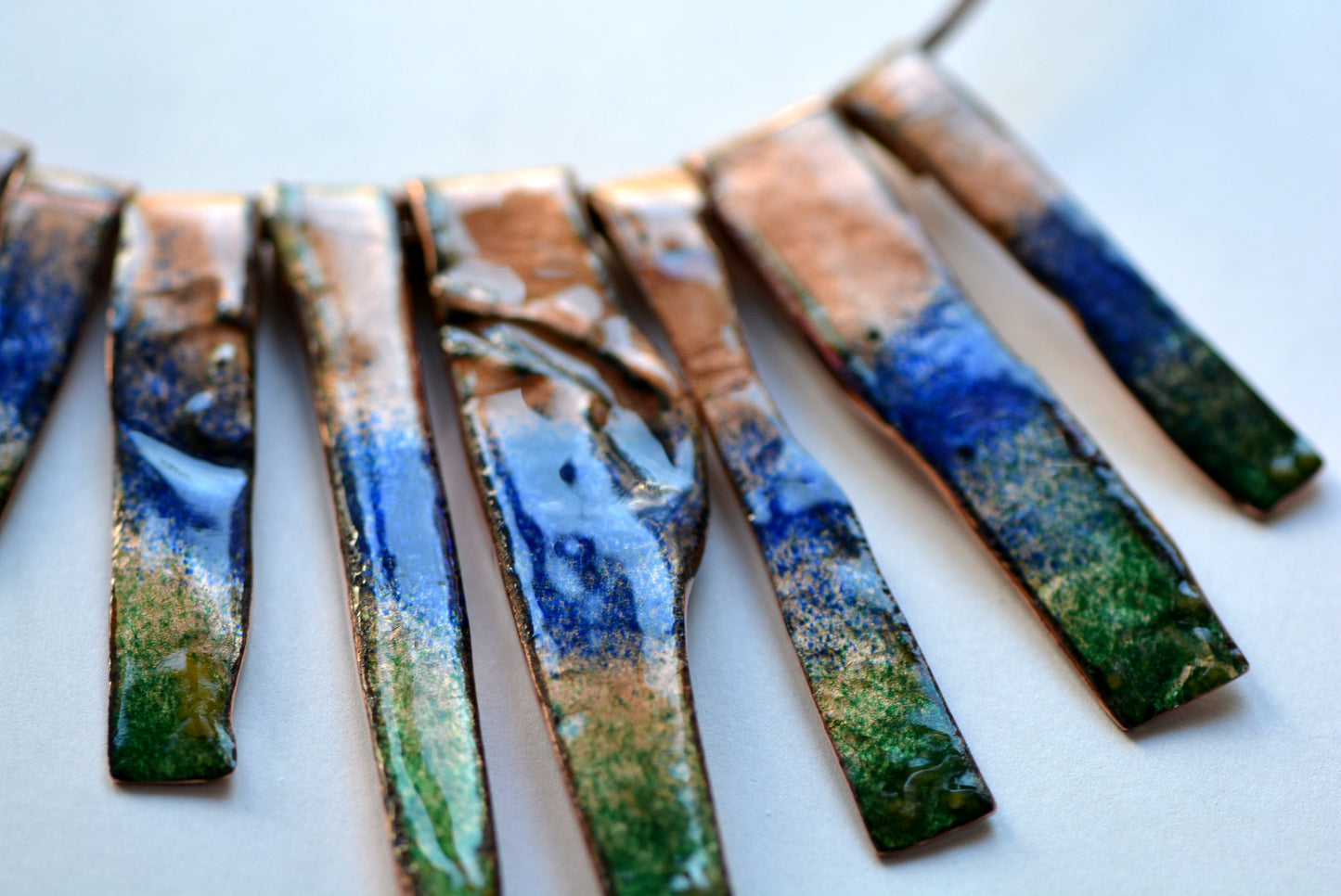
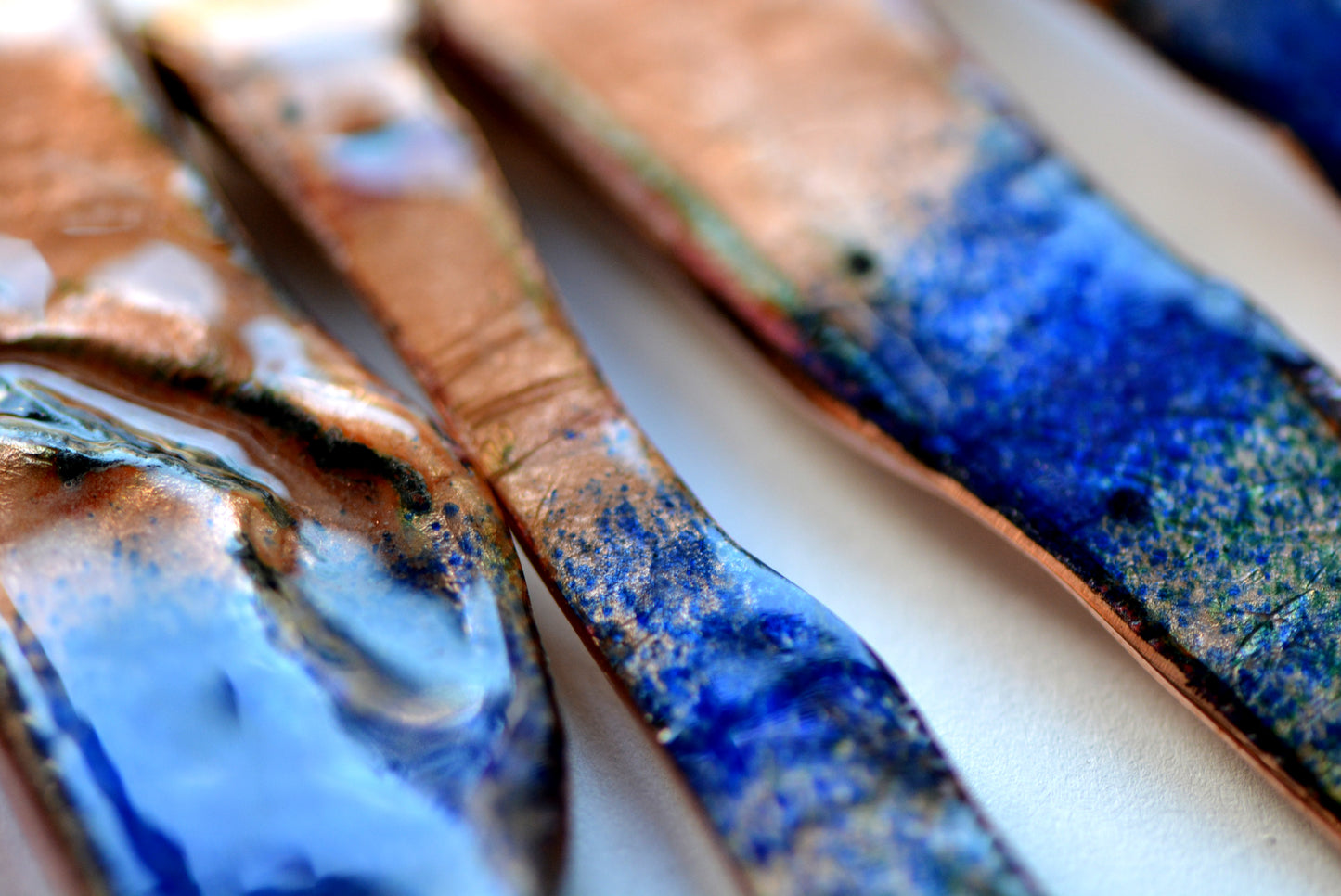
Enamel - Le Grand Feu
“Smalti a Fuoco_ Un’arte di Sottecchio”
The art of fire enameling is an ancient and highly complex craft.
Rooted in precise gestures and knowledge acquired over time, it has, through the centuries, transformed simple metals—such as copper or silver—into objects of great value and artistic significance.
Today, it is largely confined to a few specialized creations and is often mistaken for industrially produced items or those made with polymer-based enamels. As a result, it remains mostly associated with traditionally styled aesthetic prototypes.
Only in rare cases has it broken free from classical aesthetics, giving rise to modern works crafted using ancient techniques—thanks to great, though now nearly forgotten, artisans.
These are the foundations of our own deeply personal journey: not only a rediscovery of enamel’s potential, but also a search for a new, contemporary language—one that reimagines how fire enameling can still express beauty and sophistication today.
The Idea of Ancient Artifact … A Nature Relic
I have always been fascinated by history—not the kind found in school textbooks, filled with dates, events, and conjectures about a past often built on a few intertwined and shifting facts. That kind of history bored me to death; I never loved memorizing timelines or names. What has always captured my imagination is the history of art, design, and human evolution.
I read with fascination about new discoveries that challenge what we thought we knew—about certain tribes, events, or ideas. Until recently, so much remained unknown. We comfortably linger on the image of the Mask of Agamemnon—a gold funerary mask unearthed in 1876 at the Bronze Age site of Mycenae in southern Greece—yet we know little about the medieval goldsmithing traditions that followed. The mask, made from a single thick sheet of gold, was heated and hammered against a wooden form, with its details later chased by hand. We know this ancient story well, yet we understand surprisingly little about what lies closer to us in time.
Some time ago, I read an article about the discovery of a Viking artifact wrapped in a decayed robe. I was deeply intrigued. My thoughts wandered not only to the lost knowledge and craftsmanship of that era but also to the aesthetic sensibility it embodied—something we can still glimpse and admire today. Though the objects are rough, marked by time, they hold within them the imaginative power of antiquity.
This work seeks to evoke that same aesthetic: modern, yet primitive; new, yet ancient. Rough in form but elegant in color. I want to disorient the viewer—to make them wonder whether the object before them is antique or contemporary. I ask both them and myself: where does the imperfection of time end, and where does the experience of beauty begin?













